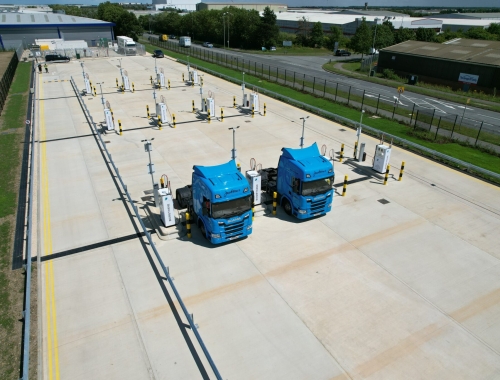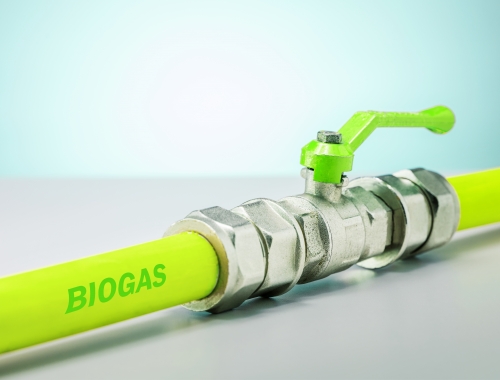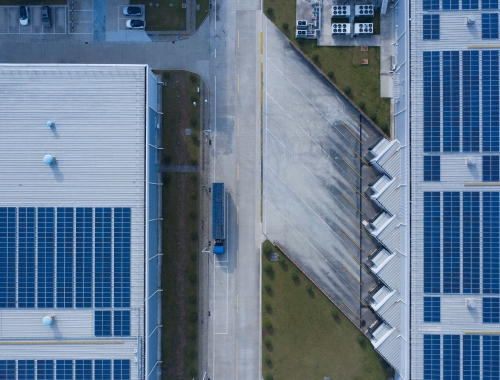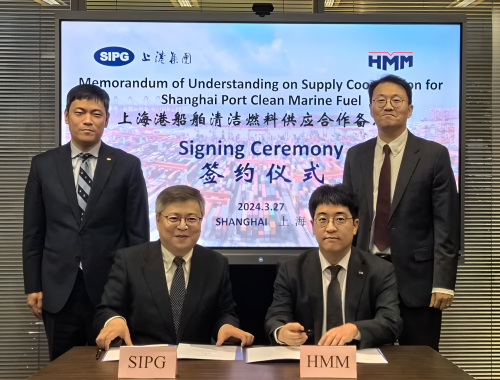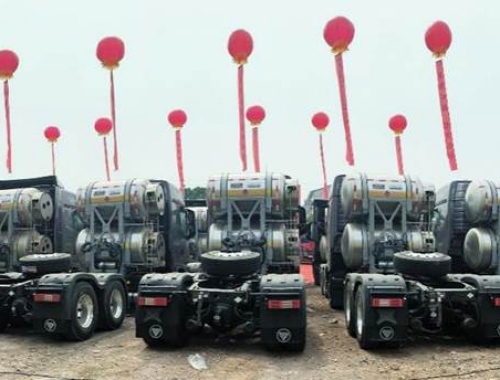Chinese hydrogen set to draw big financing
SUMMARY
More capital is needed to stimulate market vitality but the hydrogen industry expects a significant amount of financial support in the long term.
By Shi WeijunPOSTED IN:
Fuel cells are capturing the most investment within China’s hydrogen industry, buoyed by their successful application at last year’s Winter Olympics in Beijing. More capital is needed to stimulate market vitality but the hydrogen industry expects a significant amount of financial support in the long term.
China is the world’s leading hydrogen producer at about 33mn metric tons/year, but the vast majority comes from fossil fuels at about half the cost of producing with clean energy. The country aims to produce 100,000-200,000 mt/yr of carbon-free hydrogen from renewable sources annually by 2025, according to an official plan published in 2021.
Like other prospective hydrogen economies, China has zeroed in on green hydrogen as the main production pathway for the zero-emission fuel in the long term. But the central government and domestic industry are also working in the interim to transition from grey to blue hydrogen, as much more renewable capacity needs to be in place and the intermittency of wind and solar energy needs to be resolved before significant volumes of green hydrogen can be realised.
Hydrogen-related M&A transactions in China last year reached 9.31bn yuan ($1.35bn), up from 7.85bn yuan in 2021 and 5.0bn yuan in 2020, according to a presentation by Franklin Zhai, energy, utility and mining industry deals leader at PwC China, at a recent hydrogen summit in Shanghai. Fuel cells and related core components have accounted for the majority of deal volume over the past three years, representing 91% in 2022, 85% in 2021 and 96% in 2020
The number of hydrogen-related transactions over the same period fell to 44 last year from 51 in 2021 and 49 in 2020, hinting that investors are conservative about hydrogen. Private equity and venture capital funds were more active, as they made up a combined RMB 7.7bn of last year’s RMB 9.31bn – equivalent to an 83% share that was far higher than 34% in 2021 and 20% in 2020.
Reducing cost across the hydrogen energy value chain will be the key to promoting the fuel’s application on a larger scale in sectors ranging from industry, transport and heating. Hydrogen at a price point of nearly $10/kg is already used in some traditional industry sectors such as petrochemicals. Heavy-duty trucks and other commercial transport can adopt hydrogen economically at $3/kg, while the fuel becomes viable for passenger cars in most scenarios at $2/kg. Hydrogen-based steelmaking in China could break even when the cost of hydrogen falls below $1.9/kg.
Cost competition
Natural gas-based hydrogen costs 15 yuan/kg ($2.17/kg) to produce, a good middle ground as it is more expensive than 9 yuan/kg for coal but competitive on the high end of the 10-16 yuan range for industrial byproduct. Producing hydrogen from gas is also competitive against water electrolysis, where production costs are determined by electricity prices – a power tariff of 0.8 yuan/kWh results in a cost of 48 yuan/kg of hydrogen, coming down to 14 yuan/kg for 0.1 yuan/kWh.
These prices do not account for carbon pricing, which China has implemented in the form of the world’s biggest emissions trading scheme (ETS). The Chinese ETS has only covered domestic thermal power generation since it launched nearly two years ago in July 2021, but is expected to include seven other emissions-intensive sectors – namely steel, building materials including cement, nonferrous metals, refining and petrochemicals, papermaking and aviation – over the next several years.
The future carbon price will have a major impact on the competitiveness of green hydrogen compared with blue and grey hydrogen, according to Rong Junfeng, chief expert of Sinopec’s Research Institute of Petroleum Processing and director of the New Energy Research Institute at the NOC. A carbon price of 50 yuan/mt would raise the cost of coal-based hydrogen to 11 yuan/kg while 500 yuan/mt would increase the cost to 20 yuan/kg. China’s carbon price stood at 55.5 yuan/mt in early May.
Two-thirds of China’s hydrogen output in 2020 came from fossil fuels, followed by 30% as an industrial byproduct and 3% from renewably-sourced electricity. The share of fossil fuels in the hydrogen supply mix will fall to 60% and 23% for industrial production by 2030, while green hydrogen will account for 15% and biomass hydrogenation 2%, Rong said at the Shanghai summit.
By mid-century, green hydrogen will make up 70% of supply, followed by fossil fuels on 20% and biohydrogen on 10%. But China will need decades to install enough renewable electricity capacity for green hydrogen to meet this ambitious forecast, leaving room for blue hydrogen in the medium term.
State enterprises leading the way
Leading state-owned energy firms – including CNPC, Sinopec, China Energy Investment Corporation and China National Coal Group – are spearheading investment, construction, and operation of large-scale hydrogen production projects, as they aim to challenge US and European competitors to meet rising demand. Chinese players are mainly locating their developments in remote areas with abundant wind and solar resources, such as the deserts of north and northwest China.
Sinopec for instance is building the world’s biggest solar-powered hydrogen plant. Located in Kuqa of northwest China, the first phase of the 1 GW-capacity project will have 300 MW of solar power over an area of 27.5km2. Built at a cost of 2.7bn yuan, it will produce 20,000 mt/yr of green hydrogen at a cost of RMB 17-19/kg for use in a Sinopec refinery. Rong said the electrolyzers for the project will come online in June.
A second hydrogen project in Inner Mongolia will use 400 MW of solar power and 390 MW of onshore wind to produce 30,000 mt/yr of green hydrogen.
Besides production facilities, other new hydrogen infrastructure is starting to materialise in China as the country accelerates its path to peaking CO2 emissions before the end of this decade. Sinopec said in April that it was developing China’s first long-distance pipeline for transporting low-carbon hydrogen. The 400 km-long pipeline will begin in Ulanqab of the Inner Mongolia autonomous region and transit Hebei province before terminating at Yanshan Petrochemical in China’s capital of Beijing.
It will be the first cross-provincial, long-distance, and large-scale hydrogen pipeline in China, with an initial capacity of 100,000 mt/yr that could be increased to 500,000 mt/yr. After it is completed, the pipeline will transport green hydrogen that will be used to replace existing fossil energy in the Beijing-Tianjin-Hebei region.
The pipeline will complement Sinopec’s ambition to be the leading hydrogen player in China by 2025. The company presently produces 4.45mn mt/yr of hydrogen that it consumes itself, and aims to build 1,000 hydrogen refuelling stations in the country by the end of 2025.
China Energy Investment meanwhile signed an agreement with French state utility EDF in March to construct an offshore green hydrogen facility for energy storage. The facility will be built in Jiangsu and will have a total installed capacity of 1.5 GW. The two companies agreed to expand cooperation during French President Emmanuel Macron’s three-day visit to China the same month.
An integrated approach
While the US, Europe, Japan and South Korea are each progressing with their own focus,
China could integrate the paths to explore its own journey. As one of the first countries in the world to start hydrogen energy research and application, the US has the largest number of hydrogen energy-related patents. California is the fastest-growing state for hydrogen, leading the nation in the number of refuelling stations and fuel cell vehicle ownership.
Hydrogen is already used widely in Germany in the chemical and steel industries, but most of it is still grey hydrogen. But with green hydrogen emerging as a future development direction, Europe’s biggest economy stands to become a major hydrogen importer in the future.
Japan and South Korea are both scarce in natural resources, but have taken different development paths for hydrogen. Japan has leveraged its decades of fuel cell expertise as a springboard for transitioning into hydrogen power generation, and is now investing heavily in hydrogen storage, transportation and related infrastructure. South Korea meanwhile launched in-depth collaboration with overseas hydrogen sources early on, led by Hyundai.
In China the government encourages hydrogen development in the transportation industry. The amount of investment dedicated to green energy for each province depends on the resource endowment of each region.
Electrolyzer sales to boom
China’s manufacturers of electrolyzers – the critical equipment that can use clean power to split water into hydrogen and oxygen – expect the domestic market to surge this year as the country continues to roll out projects to help meet decarbonization goals.
Electrolyzer sales in China are on course to double this year, executives at leading manufacturers said at the summit. About 1,500-2,000 MW of equipment will be sold in the country this year compared with 600-700 MW of equipment sold last year. Some of this year’s demand increase is coming from projects that were delayed last year because of Covid outbreaks or supply chain disruptions, Xu Wei, chief engineer at Tianjin Mainland Hydrogen Equipment, said during a panel.
China’s capacity to manufacture electrolyzers – the equipment used to make green hydrogen – could grow about 20 times by 2028 as costs of the clean energy source plunge, state-owned investment bank CICC said in a research note at the end of March.

